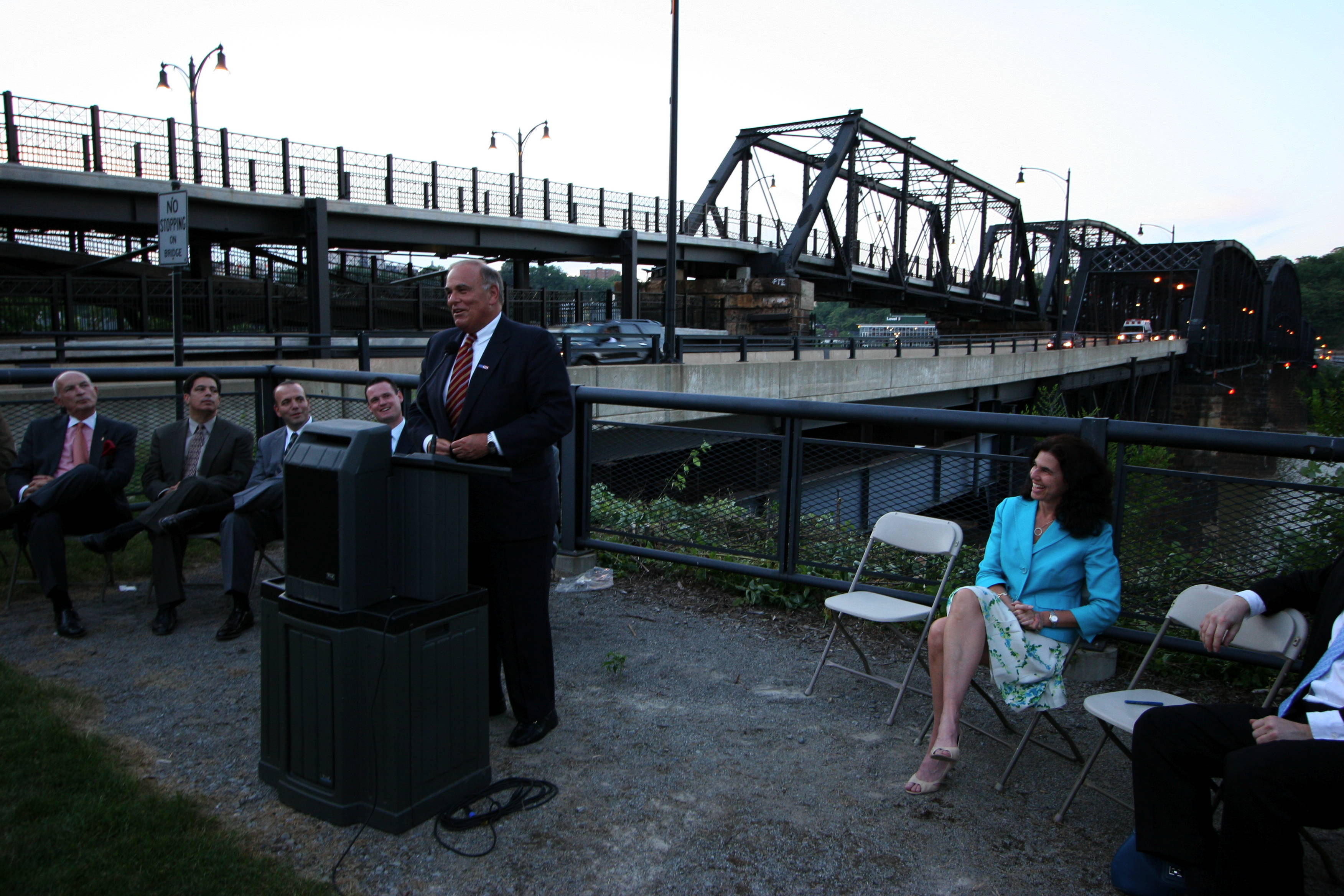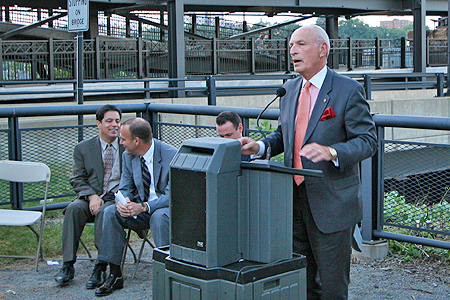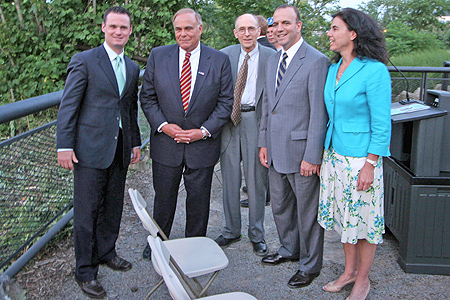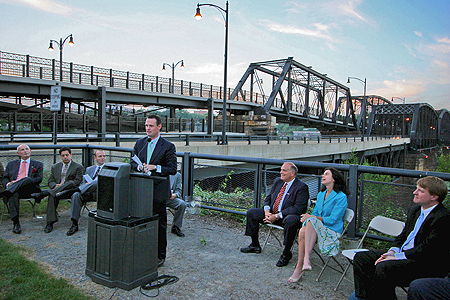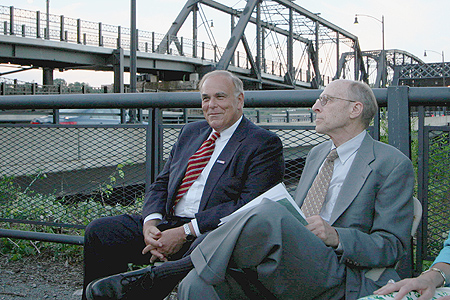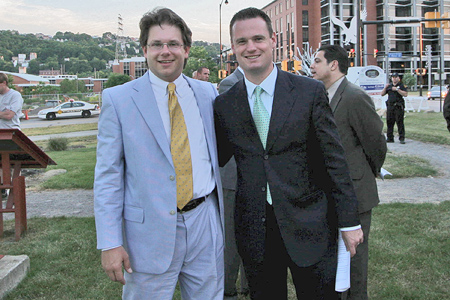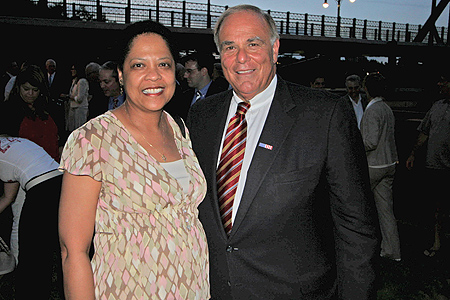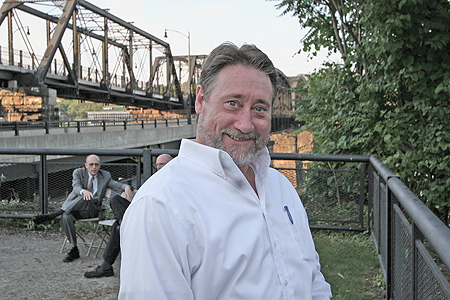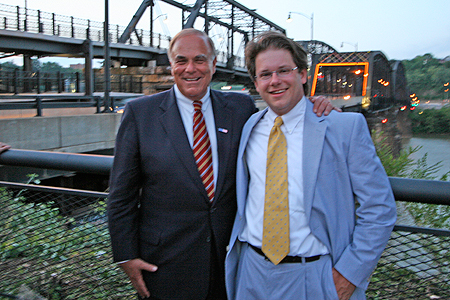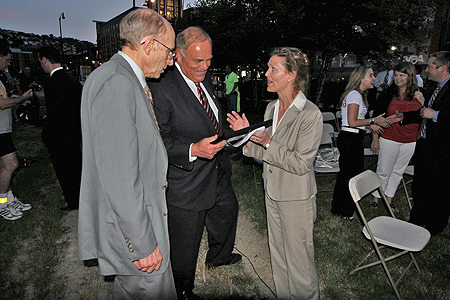
Hot Metal Bridge Lighted
PHLF News
June 13, 2008
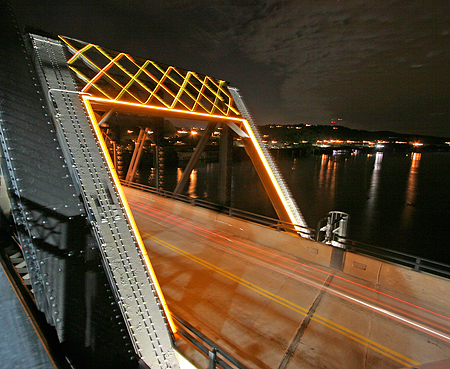
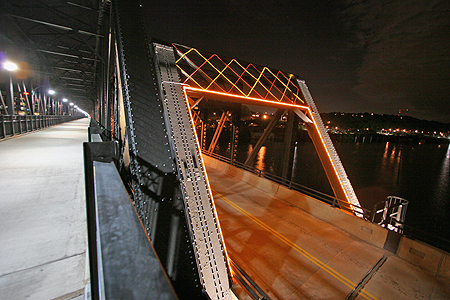
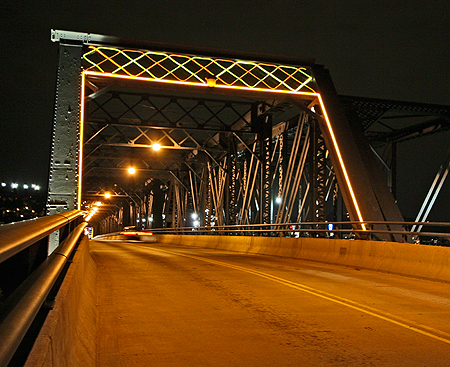
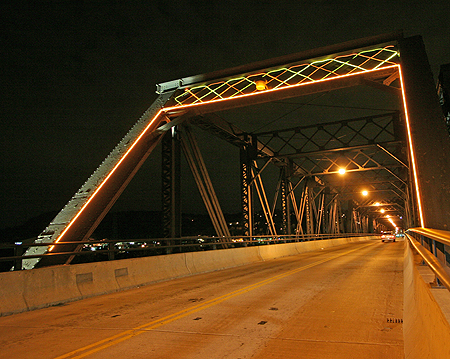
Governor Edward G. Rendell, accompanied by Mayor Luke Ravenstahl, activated the lighting of the portals of the Hot Metal Bridge, as it is commonly called today, at 8:15 p.m., Thursday, June 12, 2008.
The ceremony took place at the Steelworkers’ Monument on the South Bank of the Monongahela River. This was the third bridge decoratively lighted under the auspices of Pittsburgh History & Landmarks Foundation (Landmarks). The first was the Smithfield Street Bridge and the second was the Roberto Clemente Bridge.
Actually, the portal lighting decorates the Main Bridge (Monongahela Connecting Railroad Bridge), constructed in 1904 and opened to motor vehicles in 2000. The Hot Metal Bridge of 1900 (opened to bicycles and pedestrians in 2007) replaced the original Hot Metal Bridge of 1887. With the opening of Hot Metal Street in South Side Works, the name “Hot Metal Bridge” is now commonly used to refer to the historic bridge pair that is built on a shared set of piers.
Historically, hot metal––iron just smelted in a blast furnace and still close to 3,000 degrees Fahrenheit—was transported in ladle cars from the blast furnaces on the north shore of Jones & Laughlin’s Pittsburgh Works across the Hot Metal Bridge of 1900 to the Bessemer converters and open-hearth furnaces of the South Side Plant. The Main Bridge of 1904 served the general purposes of the Monongahela Connecting Railroad, including the transportation of steel ingots and slabs.
The bridge lighting is LED tubular lighting in orange, red, and yellow, suggesting the colors of the hot metal and steel slabs that were once transported across the bridges.
Grenald Waldron Associates of Philadelphia designed the lighting for the bridge as they did for the Roberto Clemente Bridge. Courtney Sarge was the principal designer.
The Governor said, “Grenald has done excellent work once again, we are delighted to see Landmarks utilizing Pennsylvania designers and Pittsburgh contractors for the work that they do with bridge lighting.”
Funding for the project came primarily from a grant from the Department of Community and Economic Development at the Governor’s request. That grant totaled $125,000. Design of the lighting was financed by grants from the Soffer Corporation, the International Brotherhood of Electrical Workers, Wellington Power, and Landmarks totaling $12,500. Landmarks also underwrote an additional $15,000 of costs for the project, bringing the total to approximately $150,000.
Mayor Ravenstahl pointed out, “This is another fine public-private accomplishment in our goal to make Pittsburgh a uniquely attractive city by capitalizing on our historic assets. We thank the Governor and Landmarks and our city team for bringing about this excellent result.
Mark Bibro, Chair of Landmarks, said, “We are grateful that we have a governor who understands the significance of lighting these great engineering monuments to promote their continued use and increase tourism. We are the ‘City of Bridges,’ with 446 bridges (based on the most recent count) within the City limits, and hundreds more throughout Allegheny County. We must continue this lighting program.
Founded in 1964, the Pittsburgh History & Landmarks Foundation works to identify and save architectural landmarks; revitalize historic neighborhoods; and instill community pride. Visit www.phlf.org or call 412-471-5808 for information about preservation services, educational programs, and membership benefits.
# # #


